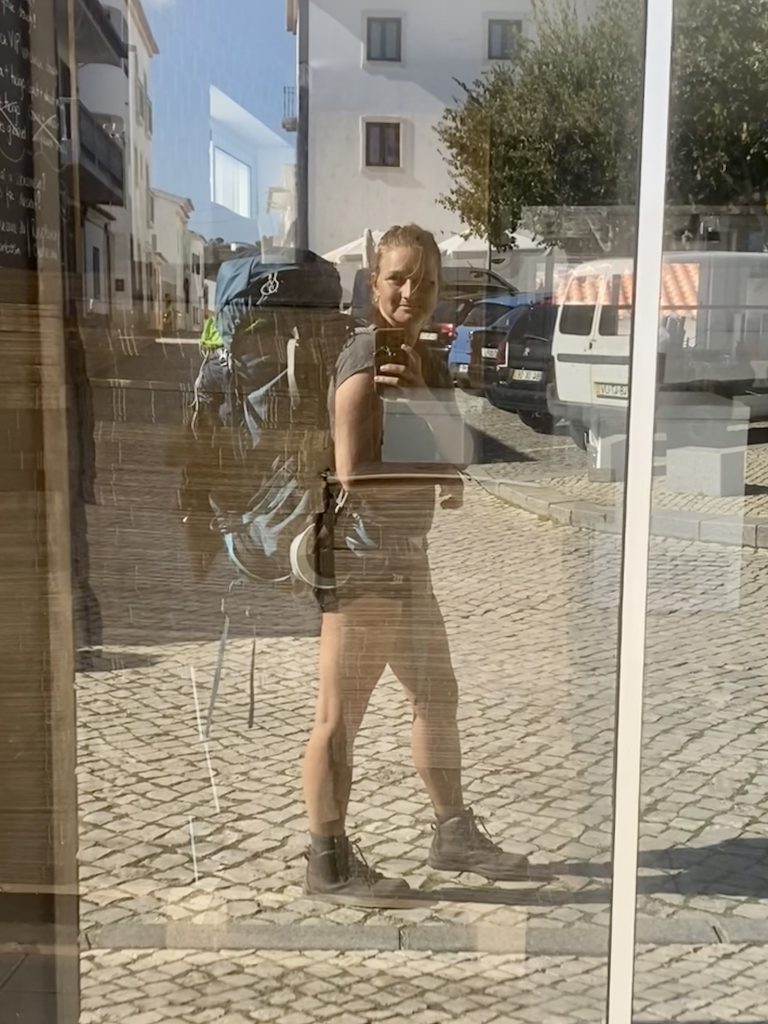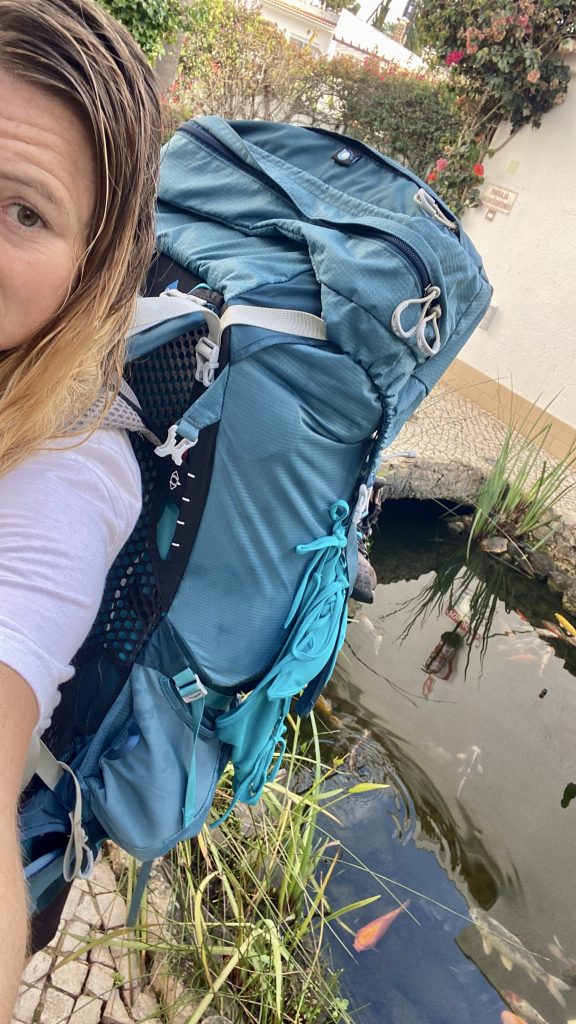Hiking the Fishermen’s Trail. What to pack.
For any long distance hike, the general rule is to pack as lightly as possible and nothing but the bare necessities, although that last part might have come from a singing cartoon bear. I wholeheartedly agree with two exceptions: I always bring one luxury item. Something I definitely won’t need but some sort of bonus, comfort, a treat so to speak. And on this particular hike, I overpacked on purpose. Back when a certain pandemic hit, I had just spent loads of money for long-distance hiking gear to be perfectly equipped for the John-Muir-Trail (s. here) and 4 years later most of it is sitting on a shelf in the attic, collecting dust. So I called them back from their early retirement and filled up my Osprey© with lots of geeky goodies for hikers. Even the bear essentials, because yes, pun intended, I brought my Bearvault BV500©. You never now if you run into a brown bear enjoying a holiday from Yosemite at the Portuguese seaside. My food would have been safe. I also packed my solar-powered power bank, my Garmin inReach©, 2 waterproof Osprey© clothes bags, a mini fold-up mosquito net, and an all-purpose knife, all to maybe try out. Since I also wanted to try out hiking with a heavy backpack – as I would on the John-Muir-Trail, I added several luxury items: my iPad and the external keypad so I could do some writing (and I did), an old-fashioned notebook and fountain pen, two books, more clothes than necessary, and an extra pair of shoes, my beloved Crocs© sneakers. Dang, all this brand name dropping, I should get paid for this blog post. But I’ve always been a bad negotiator.
All in all, the fully loaded backpack weighed about 12 kg, plus water. Which is double to what most hikers carried on the Fishermen’s Trail. When hiking the JMT, I can expect about 20 kg just to cover basic equipment, so why not start practicing now, and see how fast my back can get ruined? Surprisingly: not at all. Honestly, it was fine. Yes, of course your body aches after a full day of hiking and carrying around those extra kilos. However, and now they really have to pay me, the Osprey Women’s Aura AG 65l Trekkingrucksack, M, in challenger blue, is so comfy, you just sort of snuggle into it. It sits perfectly on your hips and distributes the weight equally between shoulders and hips. It has plenty of zippers and departments, ample space to put water bottles and random gems you find en route, front belt zipper pockets big enough to squeeze your phone in, and an extra detachable compartment on top. Your back can still breathe, every strap is adjustable and the rain cover worked perfectly. The only criticism I have is that it takes some practice to figure out your balance. I often felt like the top toppled over and whenever I had a break, I had to sit down and lean back to take it off or put it back on. One of the reasons I am – careful, TMI incoming – team #backpackstayson when peeing – apparently a hotly debated topic among female hikers. I didn’t bring hiking sticks. Mostly because I hardly ever use them and have massive problems with arm-leg-coordination. And I didn’t feel they were necessary. I met several people who said they would not bring them again, some were happy to have them. So do what you like.
I will not bore you with a detailed list of everything I brought, you can find links to more professional advice on what to pack in neat bullet points at the bottom of this page. However, let me make a few comments about some items.
Hiking boots: I brought actual hiking boots, ankle height. Not the super sturdy alpine boots but ones with a GoreTex layer which turned out to be perfect when crossing little streams or walking through shallow waters. Lots of people hiked with trail runners or trekking shoes which is probably more comfortable but you will end up getting sand in your shoes so both options have their benefits and shortcomings. Again, personal preference.
Clothes: My Katmandu© rain jacket was a present from my brother. I’ve travelled Tambourine mountain in it, walked through jungles and forests, withstood nasty weathers. It has wind- and waterproven itself over and over. I also carried a long pair of GoreTex zip-on hiking pants which I only wore once and they did a great job. I was incredibly lucky with the weather and hiked 90 % of the trail in shorts. So no need for my merino wool sport gloves or my woollen socks either. Always good to have them, though, just in case. I brought two sports bras and alternated between them, and I brought four worn-out cotton shirts. I always bring my favourite shirts that are not presentable any more, sort of one last hurrah before parting ways forever. Generally, I would recommend anything quick-dry, mesh sort of clothing. When it comes to socks and underwear, I like to be on the safe side – you never know if you accidentally shit yourself twice a day or not, so yeah, I will always bring too many than necessary but always enough. A few extra grams for a lot less anxiety. Worth it all the way.
My luxury item was a foldable wine glass and a corkscrew and it turned out to be essential. What better way to end a day of hiking watching the sunset from a cliff while enjoying a glass of rich, red Portuguese vino! Saúde.
When it comes to things you need, nothing beats your personal experience. You will deem some items essential and end up never using them and on the other hand, you will desperately miss some stuff. Listen to yourself, make a mental note for next time. Because there will be a next time. I have never heard of an anyone who never ventured out again after their first hike. And in the end, it is you who has to carry everything. So you owe no one an explanation why you brought this or that. You do you. Carry on.




Raw Data
For general info visit https://rotavicentina.com/en // For chapter 1, click here! // For chapter 3, click here!
For a detailed list on what to pack, just google for “Fishermen’s Trail” and “what to pack”. Here is one example: https://lotuseaters.travel/wp-content/uploads/2025/01/Fishermans-Trail-Packing-List-PDF-1.pdf
